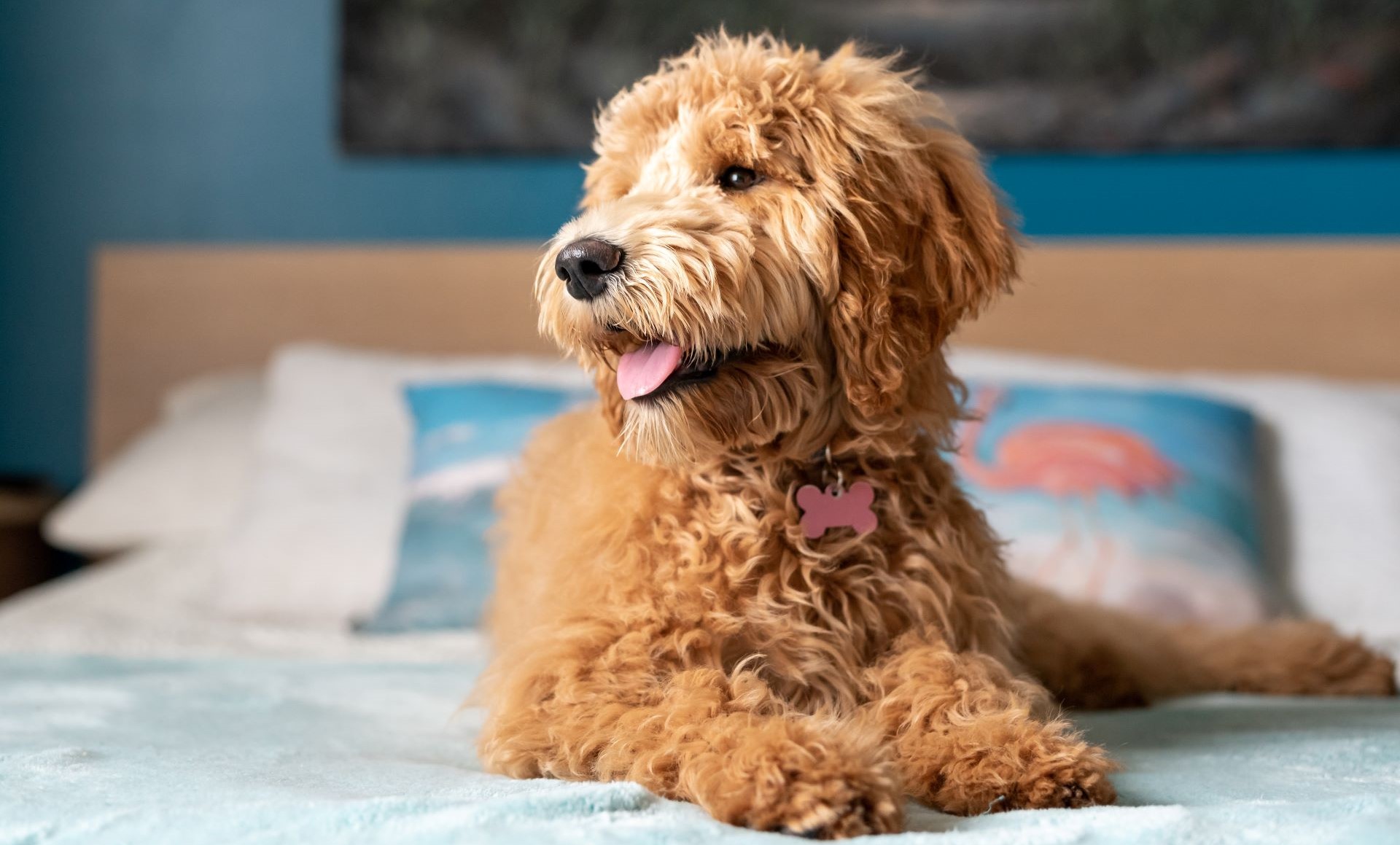
Are you longing to add a new four-legged member to your family but worried about allergies? You’re not alone. Many families face the challenge of allergic reactions triggered by pet dander, making it difficult to find a suitable canine companion. Fortunately, hypoallergenic dog breeds can provide the joy of companionship without overwhelming allergy symptoms.
While no dog is 100% allergen-free, there are breeds that produce fewer allergens and tend to be more compatible with allergy-prone households.
In this blog post, we’ll delve into what makes a dog “hypoallergenic,” the factors to consider when choosing one, and highlight several of the best hypoallergenic breeds for families.
What Makes a Dog Hypoallergenic?
Understanding what makes a dog hypoallergenic is crucial. Allergies are typically triggered by pet dander (dead skin cells), saliva, and urine rather than fur itself. Hypoallergenic dogs tend to have hair instead of fur, shed less, and produce lower amounts of dander. Additionally, these breeds often require regular grooming, which helps minimize allergens in the home.
It’s also important to note that “hypoallergenic” refers only to how a dog affects people with allergies—it does not mean that these dogs are immune to allergies themselves. Many hypoallergenic breeds can still suffer from food, environmental, or seasonal allergies, just like any other dog.
Myths vs. Facts About Hypoallergenic Dogs
- Myth: Hypoallergenic dogs won’t cause allergies at all.
- Fact: While they produce fewer allergens, they can still trigger reactions in sensitive individuals.
- Myth: Only small breeds are hypoallergenic.
- Fact: Hypoallergenic dogs come in various sizes, from toy breeds to large working dogs. The key factor is often their coat type and how much dander they produce, rather than their size.
Allergy Considerations
Every individual’s reaction to allergens is unique. A dog that’s perfect for one allergy sufferer might not be as suitable for another. Before committing to a particular breed, it’s wise to spend some time around that breed—visit friends or family members who own one, or arrange a “test visit” with a local shelter or reputable breeder. This hands-on approach helps ensure you and your family won’t experience severe allergic reactions once the dog is part of your household.
Factors to Consider When Choosing a Hypoallergenic Dog
Before choosing a hypoallergenic breed, prospective pet owners should carefully evaluate all aspects of the breed, including common health issues, grooming needs, temperament, and size. Taking the time to research and understand the full profile of a breed ensures a better match for both the dog and the family. Before adopting a hypoallergenic dog, consider these essential factors to ensure a perfect match for your family:
Size of the Dog
Larger dogs require more room to roam and can be more difficult to manage in small living spaces. Smaller breeds may fit better in apartments or homes without a yard. Consider your family’s living situation and whether a small, medium, or large breed is the most practical fit.
Temperament and Energy Level
Just because a dog is considered hypoallergenic doesn’t mean it’s automatically the best choice for every household. Some breeds are high-energy and need plenty of exercise, while others are content with moderate walks and playtime. If you have young children, look for a patient, gentle breed that’s known to be good with kids.
Grooming Requirements
Most hypoallergenic breeds have coats that require frequent brushing and grooming. If you’re not prepared to handle regular grooming sessions or professional grooming appointments, some breeds may be more demanding than you expect.
Top Hypoallergenic Dog Breeds
Small Hypoallergenic Dog Breeds
Maltese
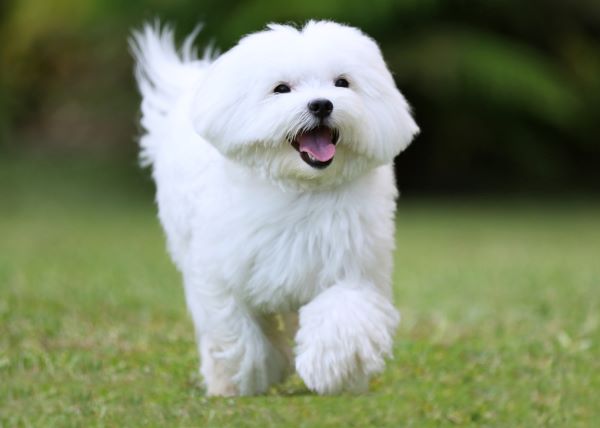
The Maltese is a gentle, affectionate breed known for its long, flowing white coat. Historically bred as companion dogs for royalty, they are highly social and thrive on attention from their owners.
- Coat Type: Long, silky, and requires frequent brushing.
- Living Space: Ideal for apartments and small homes.
Bichon Frise
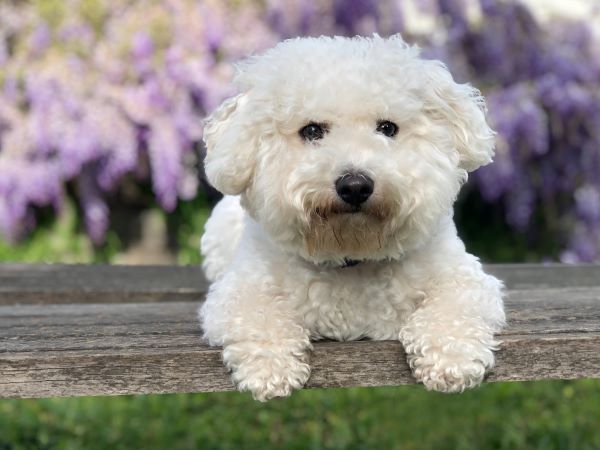
The Bichon Frise is a cheerful, playful breed with a soft, curly coat that helps minimize allergens. Their friendly nature makes them ideal for families with children.
- Coat Type: Soft, curly, and low-shedding.
- Living Space: Suitable for apartments or larger homes with active families.
Miniature Poodle
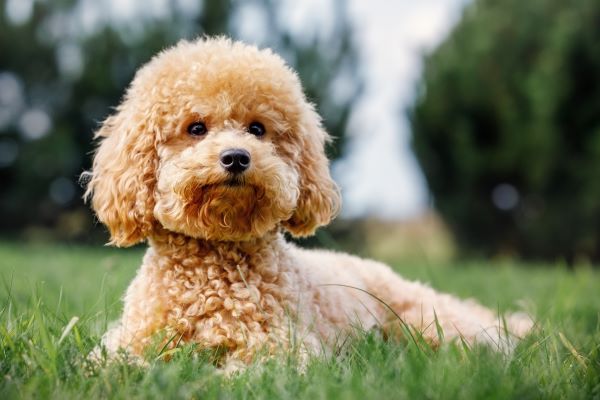
Poodles are highly intelligent and excel in obedience training. Their curly, dense coat traps dander, making them a popular hypoallergenic choice. They are affectionate and make excellent therapy dogs.
- Coat Type: Dense, curly, low-shedding, and requires regular grooming.
- Living Space: Adaptable to apartments or larger homes with ample exercise.
Miniature Schnauzer
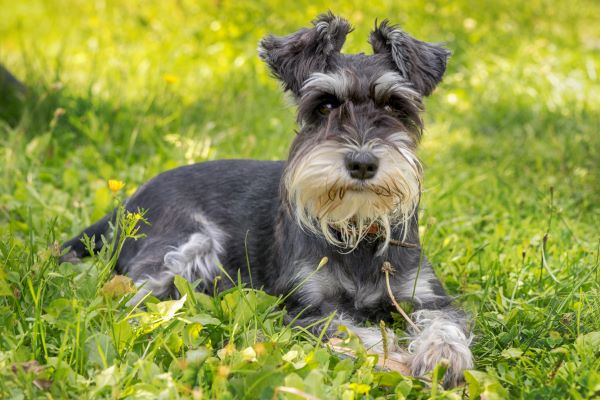
The Miniature Schnauzer is an intelligent and energetic breed. Known for its distinctive beard and bushy eyebrows, they are loyal, affectionate, and make excellent watchdogs.
- Coat Type: Wiry, low-shedding, and requires regular grooming.
- Living Space: Adapts well to apartments but thrives with outdoor activity.
Yorkshire Terrier
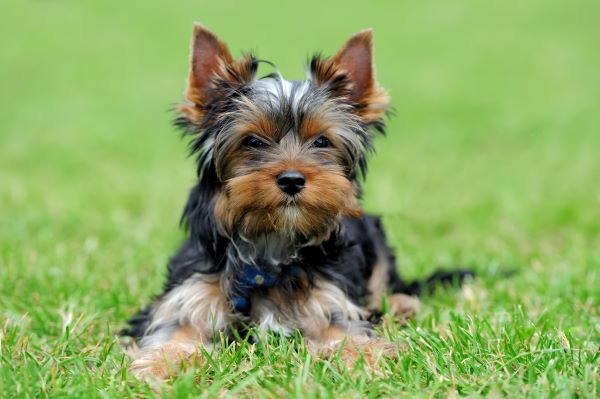
Yorkies are bold, confident, and full of personality. Despite their small size, they are fearless and curious. Their fine, silky hair resembles human hair, reducing allergens.
- Coat Type: Fine, silky, and resembles human hair.
- Living Space: Perfect for apartment living due to their small size.
Medium Hypoallergenic Dog Breeds
Portuguese Water Dog
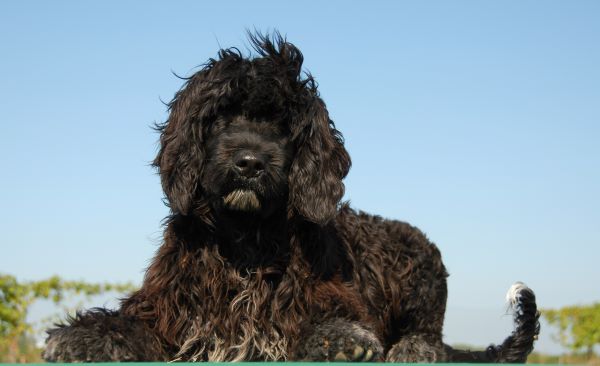
This energetic breed was historically used by fishermen to herd fish and retrieve equipment. They are adventurous, loyal, and excellent swimmers, making them perfect for active families.
- Coat Type: Thick, curly, and water-resistant.
- Living Space: Requires space for outdoor activities but adapts well indoors.
Soft-Coated Wheaten Terrier
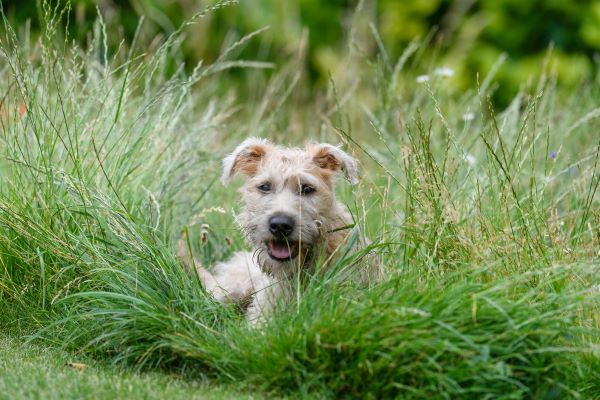
Known for their friendly temperament, Wheaten Terriers are lively, social dogs that bond closely with their families. Their signature “Wheaten greetin'” is a joyful jump they use to welcome people.
- Coat Type: Soft, wavy, and low-shedding.
- Living Space: Best suited for active families with access to outdoor spaces.
Large Hypoallergenic Dog Breeds
Standard Poodle
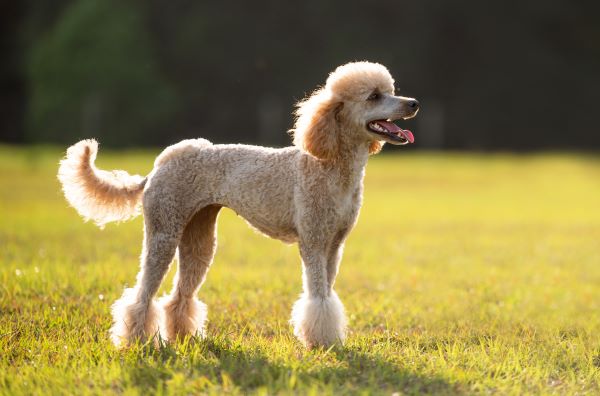
The Standard Poodle combines intelligence with elegance. Known for their calm demeanor, they excel in therapy roles and require mental stimulation to stay happy.
- Coat Type: Dense, curly, and requires consistent grooming.
- Living Space: Adapts well to various living spaces with proper exercise.
Irish Water Spaniel
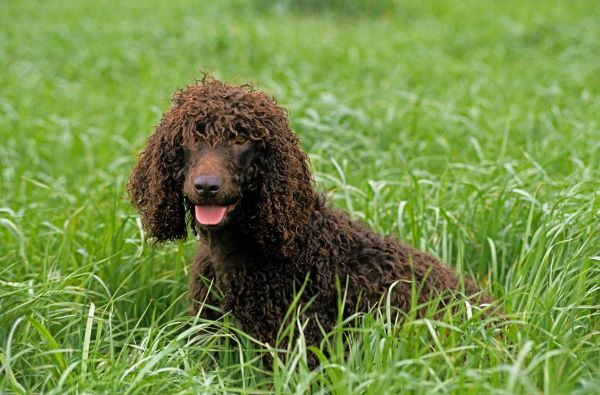
This breed is one of the oldest spaniel breeds and is known for its distinctive curly coat and love for water. They are energetic, intelligent, and devoted to their families.
- Coat Type: Dense, curly, and water-repellent.
- Living Space: Requires plenty of outdoor activities to stay content.
Giant Schnauzer
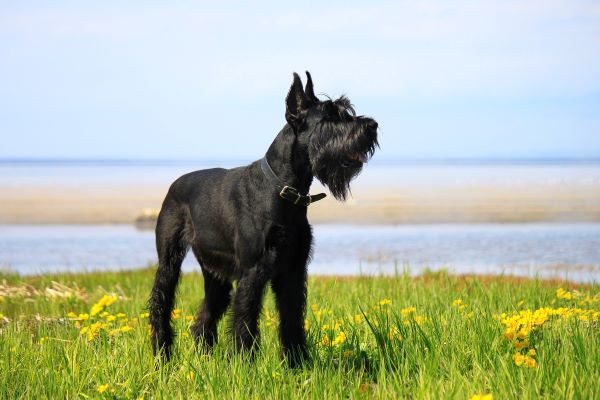
The Giant Schnauzer is a powerful, protective breed originally developed to drive cattle. Known for their intelligence and loyalty, they require consistent training and plenty of exercise.
- Coat Type: Dense, wiry, and low-shedding.
- Living Space: Best suited for larger homes with yards.
Airedale Terrier
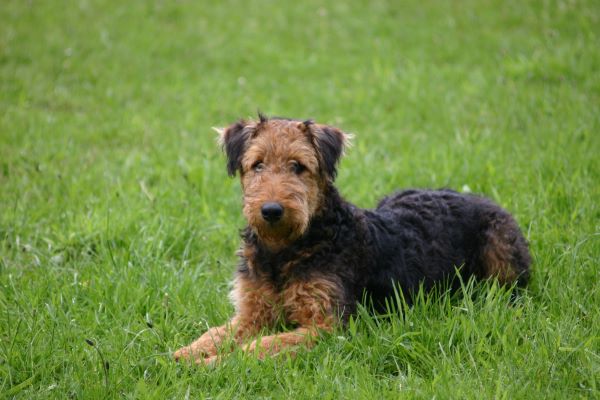
Often called the “King of Terriers,” the Airedale is the largest of the terrier breeds. They are intelligent, independent, and thrive in active households where they can engage both mentally and physically.
- Coat Type: Dense, wiry, and low-shedding.
- Living Space: Adapts well to larger spaces with regular exercise.
Are Doodles Hypoallergenic Dog Breeds?
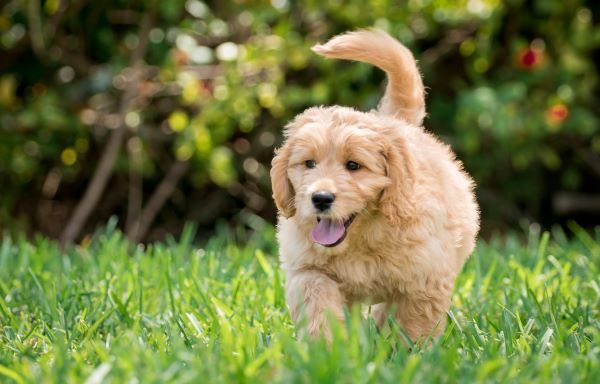
While Doodles are often marketed as hypoallergenic due to their Poodle-influenced low-shedding coats, they are not guaranteed to be fully hypoallergenic. Allergies are typically triggered by dander rather than fur alone, meaning even low-shedding dogs can still produce allergens. Doodles can have varying coat types depending on their genetic mix, with some inheriting a straighter, shedding-prone coat that may trigger allergies more easily. Additionally, grooming habits play a key role — without regular brushing and bathing, dander can accumulate in their dense, curly fur. Doodles require regular grooming appointments for their coat type.
Most Popular “Doodle” Breeds
Making the Final Decision
Matching Breed Characteristics to Family Lifestyle
From the dog’s energy level to temperament and grooming requirements, it’s crucial to select a breed that aligns with your family’s needs. A mismatch can lead to frustration and disappointment on both ends.
Consulting With Professionals
Veterinarians, breeders, and rescue organizations can provide invaluable insight. They can guide you toward a breed that’s more likely to work well with your specific allergies and lifestyle.
Adoption vs. Breeder
Don’t overlook your local shelter or rescue! Hypoallergenic mixed breeds or purebreds sometimes find their way there. By adopting, you give a deserving dog a second chance and potentially discover a wonderful companion for your family.
Grooming and Care Tips for Hypoallergenic Dogs
- Regular Brushing: Brushing your dog’s coat several times a week helps control dander.
- Bathing Routine: Bathing your dog every 2-4 weeks can reduce allergens.
- Proper Diet: Feeding your dog a nutritious diet supports healthy skin and minimizes shedding.
- Cleaning Your Home: Regularly wash your dog’s bedding and vacuum your home to remove hair and allergens.
Choosing a hypoallergenic dog breed can make it possible for allergy-prone families to experience the joy of dog ownership. While no dog is completely free of allergens, breeds that shed minimally and produce lower levels of dander can significantly reduce allergy symptoms. With the right preparation and commitment to grooming and care, you’ll be well on your way to welcoming a new best friend into your home—without the sneezing.

